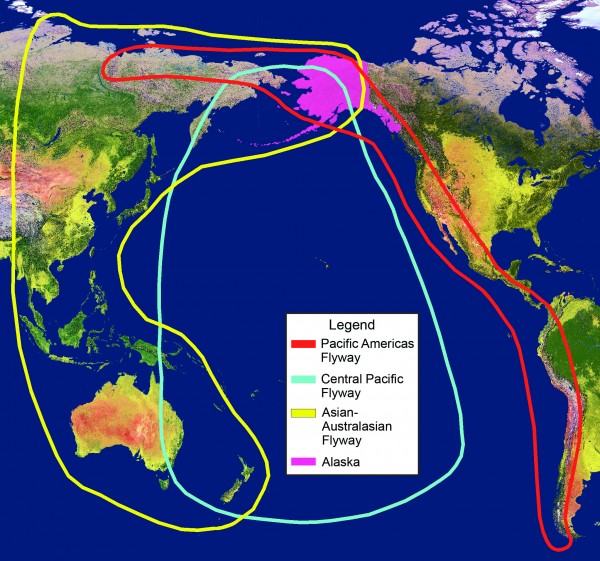
Right now, a lethal strain of bird flu is wreaking havoc in the Lower 48. It’s clear that migrating flocks have something to do with spreading the illness between farms and across continents — but exactly what is still fuzzy.
A remote spot in Southwest Alaska may hold some clues.
The Izembek National Wildlife Refuge is pretty far off the road system — unless you count the avian highways that run overhead.
“Izembek provides wonderful staging habitat for large numbers of migratory birds both from Eurasia and North America,” says Andy Ramey, a geneticist with the U.S. Geological Survey. “So there’s potential for viruses to mix and be spread among birds at that location.”
Ramey and his colleagues recently published a new study on bird flu. To figure out how migration might be helping the virus get around, they visited the Izembek Refuge every fall when Emperor Geese and Northern Pintail ducks were passing through.
Over four years, the researchers collected almost 3,000 swabs and fecal samples. None of them contained deadly flu, like the kind that’s killing off poultry at farms in the Midwest.
But Izembek did show an exact match for a harmless strain of bird flu that’s only been found in China and South Korea.
After some genetic tests, Ramey says, “what we found was these viruses were sort of hybrids. That is, they’re essentially half-Eurasian and half-North American.”
These mixed-up viruses aren’t uncommon at the edge of the continent. Moving further inland, Ramey says you’re more likely to find pure ones. And those are what researchers have been looking for to prove that migration’s spreading bird flu.
There’s been a lot of effort “to find an apple in the basket of oranges, or an orange in the basket of apples,” Ramey says.
Finding a half-apple, half-orange virus in birds on both sides of the Pacific Ocean has never happened before, according to Hon Ip. He’s with the U.S. Geological Survey’s National Wildlife Health Center in Wisconsin.
“One possible mechanism of how this happened is that a Eurasian virus was brought by wild birds into Alaska and a reassortant virus emerged from a co-infection there that now generated this combination virus — which has a little bit of Eurasian genes and a little of North American genes,” Ip says.
From there, it might’ve hitched a flight back to Asia with a migrating duck or goose. Or the hybrid virus could have spread out from Russia.
Either way, it’s a long journey. But Ip and Ramey say there might be more versions of the bird flu out there taking a similar path.
Going forward, Ramey wants to continue testing birds in the Izembek Refuge — to find out what kind of viral baggage they’re bringing with them and what happens when it gets unpacked across borders.
The study on avian flu at the Izembek National Wildlife Refuge will appear in the August edition of the journal Virology.




